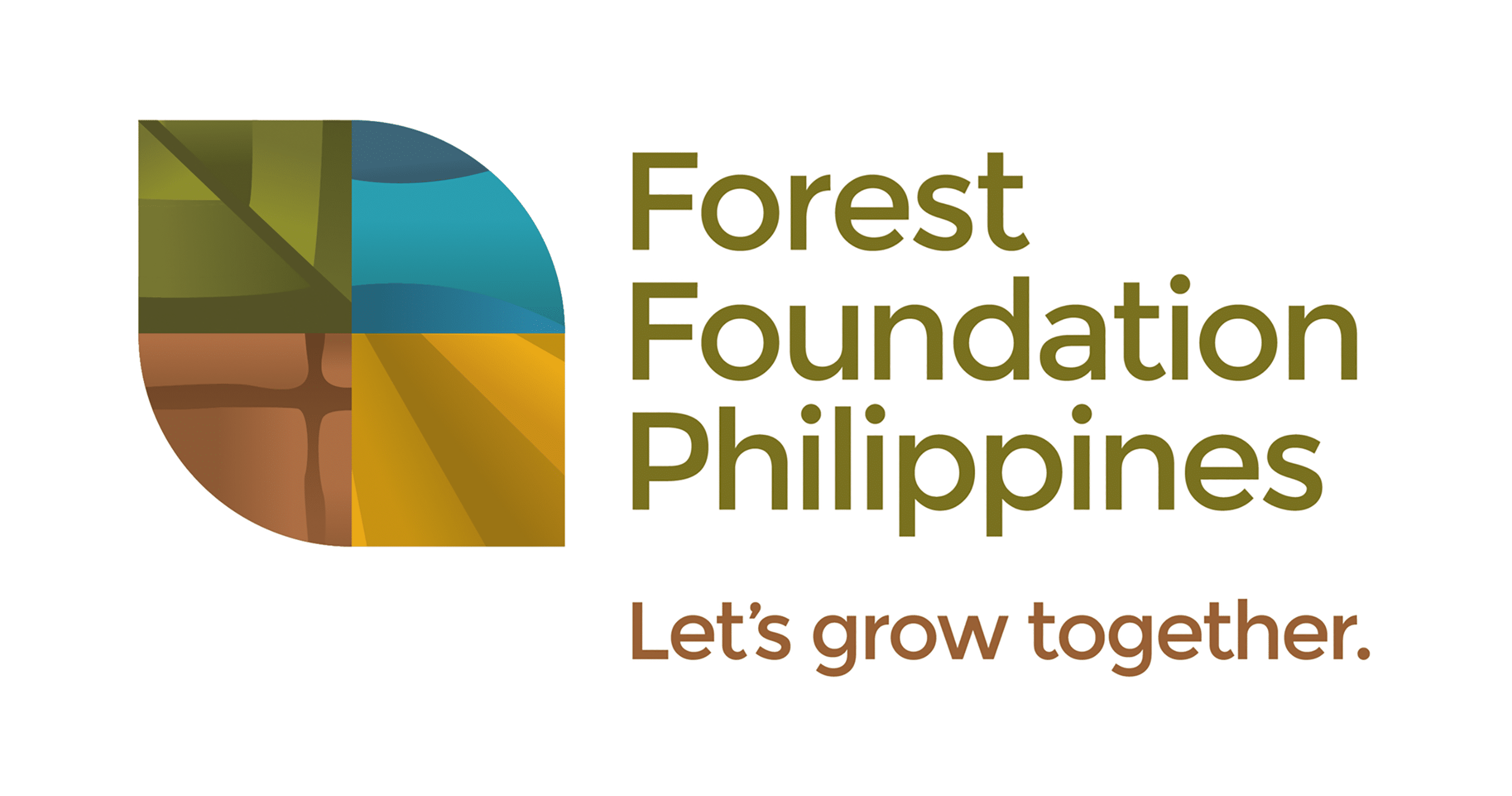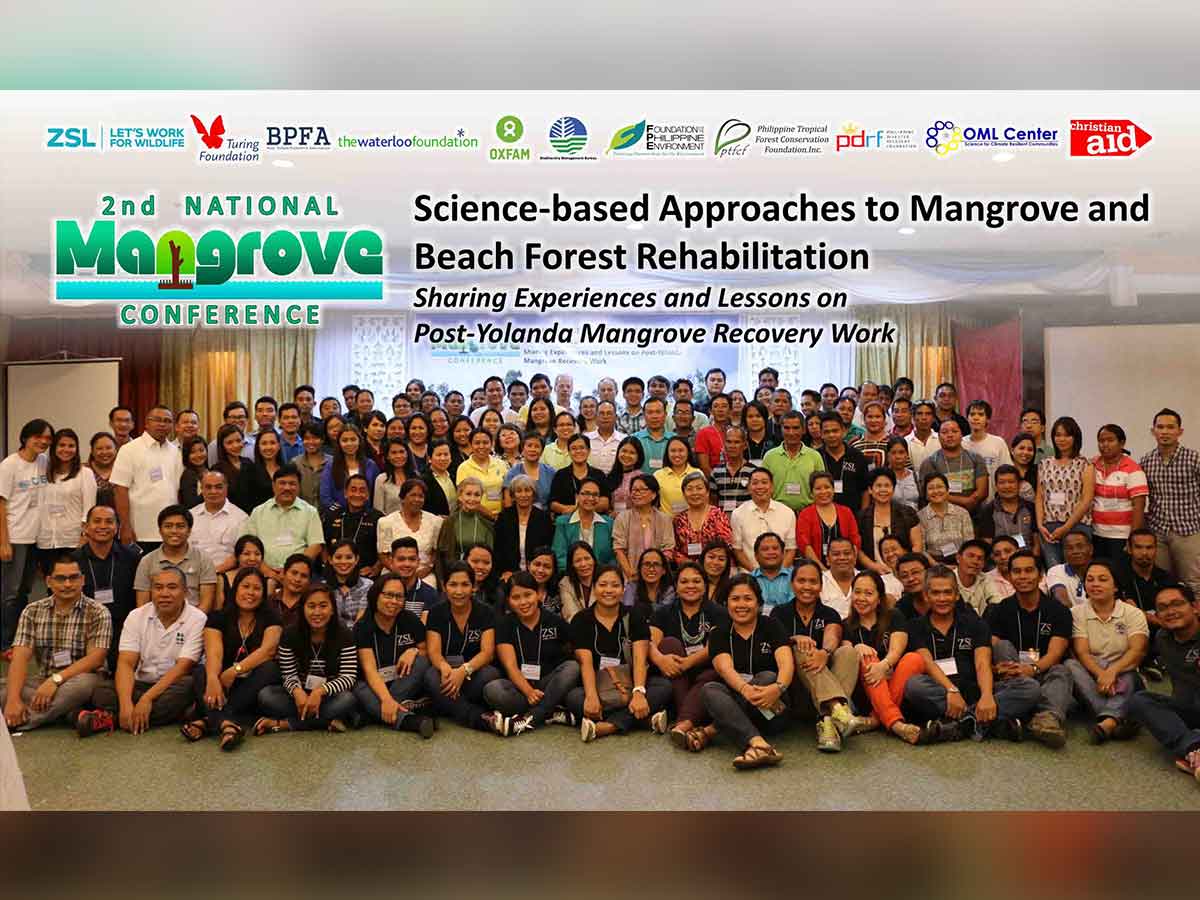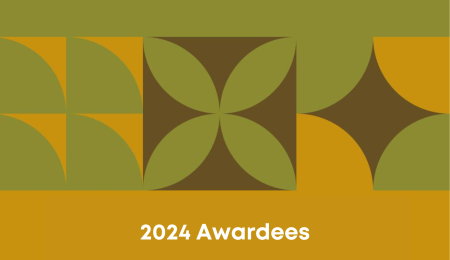This was the collective appeal of the 143 representatives of government agencies, civil society groups, the private sector, development agencies and local government units who attended the 2nd National Mangrove Conference held last September 1-2, 2015 in Iloilo City. It was organized by the Zoological Society of London (ZSL) with support from the Philippine Tropical Forest Conservation Foundation (PTFCF), Department of Environment and Natural Resources-Biodiversity Management Bureau, and Foundation for Philippine Environment (FPE), among others.
The appeal was made following the presentations of distinguished resource speakers, which set the urgency of applying the experiences and lessons learned from post-Yolanda mangrove recovery work to pursue rehabilitation efforts that are responsive to climate change.
Awareness of the role of mangroves in coastal protection took a more solid form in the wake of Super Typhoon Yolanda, one of the strongest and most destructive typhoons ever recorded in history. However, as various organizations responded hastily to the call for mangrove rehabilitation, the application of science left much to be desired.
Mangrove scientist, Dr. Jurgenne Primavera in her presentation, explained that billions of pesos have been allocated by many agencies, including the DENR for the replanting of mangroves and beach forest trees along coastlines. What is missing, according to her, is a valid assessment of whether replanting is truly necessary.
On this premise, a multisectoral team of scientists that included Dr. Primavera conducted on-site assessments of mangrove damage and recovery in Eastern Samar and Leyte in January and March 2014. From their survey, they found out that majority of naturally growing mangrove stands sustained only minimal to partial damage, especially in areas away from the storm surge. This was particularly observed in Quinapondan and Abejao, E. Samar, wherein the proportion of undamaged trees was highest in their natural mangrove forests. On the contrary, totally damaged mangroves were most observed in Guiuan and Hernani (two municipalities directly hit by the storm surge); as well as in the Rhizophora plantation in Maliwaliw (Primavera et al., 2014).
When comparing further the survival of planted vs. natural mangroves, they saw that dead trees were mostly Rhizophora; while those that survived were mostly natural stands of Sonneratia alba and Xylocarpus granatum. Moreover, adequate saplings (3,289) and seedlings (12, 133) were seen in naturally growing mangroves compared to those in plantations with 550 and 3,250 respectively (Primavera et al., 2014).
These findings led to three critical lessons: one is the urgent call for protection. While reforestation emerged to be the instantaneous response by many groups, it must not be carried out to the detriment of thousands of trees that are recovering, particularly in areas assessed to have sustained minimal to partial damage.
Relatively, as cash-for-work schemes prevailed in the aftermath of Yolanda, they should have only entailed cleaning or picking up of waste materials and debris that could hamper the natural regeneration of mangroves, and not clearing the affected mangroves.
On this note, ZSL’s Josephine Savaris shared during the conference the experience of four people’s organizations that have effectively undertaken cleaning, rather than clearing operations. PTFCF provided financial support, while ZSL provided the technical guidance to ensure that beneficiaries understood what they had to do. For PTFCF and ZSL, without valid damage assessment and proper orientation, cash-for-work schemes could encourage desperate survivors to potentially clear defoliated and seemingly dead trees and trample surviving seedlings. Improper clearing operations may turn out to be more damaging as what could already be mangrove forests for coastal protection 3-5 years after full recovery are being cut to make way for newly planted mangroves that have yet to mature in 6 to 10 years (ZSL, 2015).
In devastated areas where replanting is really necessary, the second important lesson should be applied: follow science-guided protocols in mangrove rehabilitation.
For mangroves to serve as effective coastal defense, rehabilitation efforts must be firmly grounded on ecological principles, such as species-site matching that will ensure long term benefits. They must also be based on ground assessments to determine the appropriate and site-specific intervention/s. Going back to the survey made by Primavera et al. (2014), it showed that Rhizophora spp. sustained the worst damage. In the light of recent efforts that focus on planting Rhizophora species for convenience, it must be emphasized that their survival, and ability (or lack of it) to act as storm barriers are greatly undermined when they are inappropriately planted along seafronts, seagrass beds and tidal flats. Therefore, for more effective and efficient rehabilitation efforts, Sonneratia alba (pagatpat) and Avicennia marina (piapi) are the most appropriate species to use along seafronts, as they can withstand extreme conditions of wind exposure and wave action. For Primavera et al. (2014), Sonneratia alba are the “frontliner species par excellence for wave-exposed fringing mangroves in the Philippines.”
But Sonneratia alba must first be tended in nurseries prior to planting. At the mangrove conference, PTFCF distributed a brochure that details the seed propagation for Sonneratia alba. Literature indicates that S. alba is difficult to propagate in nurseries; yet PTFCF’s Eric Buduan and Kapunungan sa Gagmay’ng Mangingisda sa Concepcion or KGMC’s Roberto Ballon proved otherwise when they developed the breakthrough technology in Kabasalan, Zamboanga Sibugay. Through this, they hope to popularize the use of S. alba in rehabilitating seafronts where they are most effective in shielding communities against strong winds and storm surges.
Furthermore, at the 2nd National Mangrove Conference, participants advocated for the passage of the National Coastal Greenbelt Bill (SB 2179 & HB 5948) that seeks to establish coastal greenbelts of at least 100m in width from the sea towards land for mitigating coastal hazards; and the reversion of abandoned fishponds to mangroves (HB 5845). While these bills are still pending in Congress, the LGUs may do well to start identifying and developing greenbelts along waterways, which should be considered as part of their CLUP and other planning mechanisms.
The third important lesson is that of the need to keep vulnerable, low-income coastal communities away from danger, as underscored by Mr. Carlo Carlos of The OML Center in his presentation. The relocation will be essential not only to make way for coastal greenbelts; but also to ensure that coastal communities are kept away from the direct path of storm surges, and accessible to social services and amenities.
Other significant lessons that can be derived from the conference included the need for more research to assess recovery and long-term mortality, and build on the body of knowledge pertaining to ecosystems damage and recovery following a natural calamity. There was also the need to reassess the implementation of major mangrove rehabilitation programs in the country to ensure science-based application and adoption of long-term success indicators.
Conference participants have put together these lessons in a Call to Action that will be disseminated to mangrove and marine scientists and practitioners, academic institutions, national government agencies, local governments, civil society groups, humanitarian aid agencies and the private sector.
But going beyond science, perhaps the most valuable lesson one can take home from the conference was more of the need for change in mindset and attitude. Indeed, our business-as-usual rehabilitation works no longer work in the midst of climate change. Unless we collectively aim for better and more long-term results, and commit to accomplish them despite the challenges, we can only do so much. Until the next Typhoon Yolanda comes.
Visit our gallery for more conference photos.
References:
Primavera JH, dela Cruz M, Montilijao C, Consunji H, dela Paz M, Rollon RN, Maranan K, Samson MS, and Blanco A. 2014. Preliminary Assessment of Post-Haiyan Mangrove Damage and Recovery in Eastern Samar, Central Philippines.
Zoological Society of London-CMRP Philippines, Inc. 2015. Proposal to PTFCF for the 2nd National Mangrove Conference: “Science-based approaches to mangrove and beach forest rehabilitation: Sharing experiences and lessons on post-Yolanda mangrove recovery work.”




